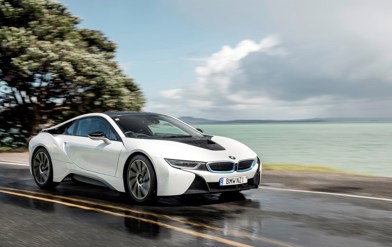It may be the entry-level vehicle for the brand, but the first Lexus UX compact crossover is set to make a big impact on the New Zealand market.
Priced from $59,990, the Lexus UX joins the premium Japanese offerings to meet global demand for a compact SUV. Seven models are available, from the UX200 to the UX250h Limited, priced at $72,900.
Lexus NZ expects to sell 200 UX models this year, keeping it in fourth spot in the luxury market behind the three German brands, Lexus NZ’s senior general manager, Paul Carroll told a press conference this week in Auckland.
“There has been a significant move to SUV of 64 per cent last year, up from 38 per cent five years ago. That is a real shift and for us we are working at 74 per cent of sales for Lexus are SUV or crossover,” said Carroll.
“We think the UX is going to add a new string to our bow for the market. We expect UX to be one of our most popular selling models, second only to the RX.”
The Lexus UX was introduced at the 2018 Geneva motor show as the smallest crossover model in Lexus’ lineup, sitting below the NX. As you could guess, the name stands for Urban Explorer. That’s essentially what it is; a city suited crossover rather than an off-roading SUV.
The UX takes a lot of elements from its parent brand, Toyota, with the same underpinnings as the Toyota C-HR and the same base powertrain as the Corolla hatchback, but it has the addition of plastic cladding, all-wheel drive availability, and the all important Lexus badge.
The UXis 4495mm long, 1520mm high, 1840mm wide, and is about the same size as other premium brands’ compact crossovers, such as the Audi Q2, the BMW X1, Volvo XC40 and Mercedes-Benz’s GLA.
Two engines are available — an entry-level 2-litre, four-cylinder engine (126kW/205Nm) and a 2-litre paired with a hybrid system that gives the combined engine specs of 131kW and 188Nm.
The UX has a CVT automatic transmission but Lexus has given it a more natural feel and smoother gear movements.
You can also have a front-wheel drive or AWD model with a plug-in hybrid or all-electric version expected in the future.
Lexus has stepped up with the exterior styling, adding as many angles as possible. A new-look spindle grille dominates the front.
It has a premium feel in the cabin with luxury touches such as leather but unfortunately Lexus continues the frustrating infotainment touchpad. Please, Lexus HQ; ditch it for future models?
The cabin front feels roomy with plenty of head and leg room, but the rear cops the coupe-style roofline with the width of the rear bench making is a tight squeeze for three adults.
On the road around Auckland, the Lexus UX slotted nicely into the dominating compact crossover line-up, and as a city car it’s ideal. It’s simple to park, there’s enough room in the boot for a weekly supermarket shop, and there’s no way you’d mistake it for its Toyota sibling, the CH-R.
Driven tested the Lexus UX 200 FWD Petrol F Sport before the launch. We struggled with the take up from the 2-litre engine when we wanted a shot of power when overtaking on the motorway. It’s not a sporty engine but what gives it an advantage is the use of Toyota’s all-new platform which produces a vehicle that handles twists and turns with ease.
Steering can feel a little light but push it into twisty turns and it behaves like a sports car, and it is nimble around the city.
Driven will be testing a variety of the UX models in the coming weeks so stand by for reviews.




